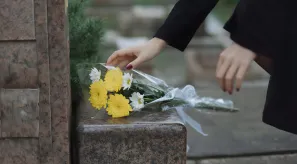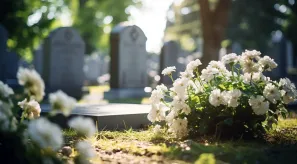Cremation is becoming increasingly common in Spain and in many other countries. Families often choose it as a more intimate, practical, and environmentally respectful way of saying goodbye. It allows relatives to keep the ashes, scatter them in meaningful places, or place them in a memorial.
However, after the process, many people face an understandable concern: how to know if the ashes are from my relative and not from someone else.
This concern is completely natural at such a delicate time, when trust and certainty are essential. That is why it is important to understand what measures exist to ensure identity and what protocols are applied by funeral homes and crematoriums.
In this guide, you will find the main verification methods, the safety procedures most facilities follow, and the regulations designed to protect families.
Methods to know if the ashes are from my relative
Several administrative and technical mechanisms exist to confirm that the urn you receive contains the ashes of the deceased person.
Documentation and funeral certificates
When families come to us concerned and ask how to know if the ashes are from my relative, the first step in resolving this would be to review the official documentation. The first step in knowing if the ashes are from your relative is reviewing the official paperwork. Every cremation generates a certificate of cremation, which records:
- Full name of the deceased.
- Date and time of the cremation.
- Internal registration number of the crematorium.
- Identification code of the urn or container delivered.
This certificate is not just a formality; it is an official guarantee. In Spain and most European countries, funeral homes are legally obliged to issue it. Families can request it at any time, and keeping it provides peace of mind for the future.
In addition, before cremation begins, several requirements for cremation must be fulfilled. These include the family’s authorization, the registration of the death in the Civil Registry, and the necessary license from local authorities. Together, this paperwork creates a chain of accountability that minimizes the risk of errors. Reviewing this documentation is one of the simplest and most effective ways to confirm identity.
Heat-resistant identification disc
Most modern crematoriums use a numbered metal disc that stays with the deceased throughout the process. This disc, made of durable alloys, withstands the high temperatures of cremation and remains intact among the ashes. It is then placed in the urn alongside the remains.
The number engraved on the disc matches both the administrative records and the external label on the urn. Thanks to this method, even if multiple cremations are taking place simultaneously in different ovens, there is no risk of confusion.
If a crematorium does not use this system, families should ask what alternative they apply. Some facilities may use barcodes, sealed identification tags, or other traceability systems. Asking how to verify that the ashes belong to your relative using other protocols is not only legitimate, but also helps families feel more at ease with the entire process.
Scientific tests
Although DNA is destroyed at temperatures above 800 °C, scientific analyses can still confirm that the remains are of human origin.
Examples include:
- Chemical tests: identify the mineral composition typical of human ashes.
- Mass spectrometry: distinguishes human remains from foreign materials.
- Microscopic analysis: detects small calcined bone fragments.
These methods cannot identify an individual person, but they can rule out doubts about authenticity. They are rarely used, except in cases of legal disputes, investigations, or when families request an extra level of reassurance.
Other ways to know if the ashes are from my relative
Beyond direct identification, preventive measures and protocols also help guarantee security.
Safety protocols in funeral homes
Funeral homes follow strict chain of custody procedures designed to prevent mistakes:
- The body is assigned a unique registration number upon arrival.
- All documents and tags carry the same number.
- Only one body is placed in each oven per cremation cycle.
- After the process, the ashes are sealed in the urn identified with the same code.
These measures ensure that the link between the deceased and the urn remains unbroken. Additionally, many funeral homes in Spain allow family members to accompany the beginning of the cremation or verify the identification tag before the process starts. In other countries, such as the United States, some crematoriums even offer viewing rooms so relatives can witness the procedure if they wish. These practices are not mandatory, but they add an extra layer of transparency that many families appreciate.
Funeral regulations
Spanish and European regulations are very clear:
- One body per oven: simultaneous cremations in the same chamber are strictly prohibited.
- Mandatory labelling: every urn must carry visible identification.
Official documentation: a cremation certificate is compulsory. - Record keeping: crematoriums must keep traceability records for several years.
Internationally, similar rules exist. For example, in the UK, the Cremation Regulations require that each cremation be individually documented and witnessed by staff. In the US, state laws oblige crematoriums to maintain a written logbook of every stage, from intake to final delivery.
These laws exist for one reason: to ensure that when families ask how to know if the ashes are from my relative, there are verifiable answers backed by legal requirements.
Frequently asked questions about how to know if the ashes are from my relative
Can ashes ever be mixed by mistake during cremation?
No. Crematoriums are designed to handle one person per cycle. The heat-resistant disc and administrative records ensure accurate traceability. The possibility of mixing is practically eliminated when protocols are followed.
What happens if I receive an urn without a label?
This should not happen. If you receive an unlabelled urn, contact the funeral home or crematorium immediately. Families have the right to demand clarification and the necessary paperwork to confirm the ashes’ identity.



